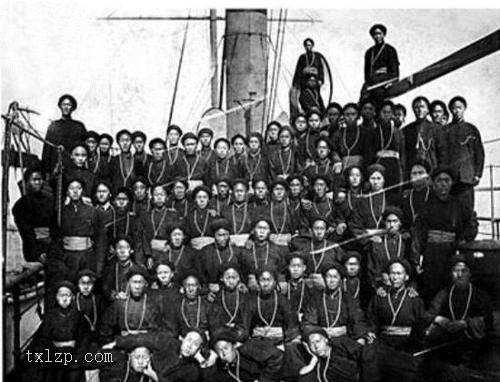Period:Song dynasty Production date:11thC-12thC
Materials:wood (with polychrome decoration)
Technique:carved, painted,
Subjects:bodhisattva
Dimensions:Height: 1.70 metres
Description:
Figure of Avalokiteśvara; with a naturalistic face and glassy, reflecting eyes; seated in position of a variant form of ‘rājalīlāsana’ (royal ease). Made of polychromed wood; the surface repainted; the limbs are partly restored.
IMG
![图片[1]-figure BM-1920-0615.1-China Archive](https://chinaarchive.net/Song dynasty/43/mid_00034170_001.jpg)
![图片[2]-figure BM-1920-0615.1-China Archive](https://chinaarchive.net/Song dynasty/43/mid_00330243_001.jpg)
![图片[3]-figure BM-1920-0615.1-China Archive](https://chinaarchive.net/Song dynasty/43/mid_00496307_001.jpg)
![图片[4]-figure BM-1920-0615.1-China Archive](https://chinaarchive.net/Song dynasty/43/mid_00496582_001.jpg)
![图片[5]-figure BM-1920-0615.1-China Archive](https://chinaarchive.net/Song dynasty/43/mid_00496865_001.jpg)
Comments:The bodhisattva Avalokitesvara, or GuanyinWood, traces of pigmentChina, about 1100–1300This sculpture of Guanyin (known in Sanskrit asAvalokitesvara) would have been a key image in aBuddhist temple. He is a bodhisattva, or Buddhato-be, associated with compassion and said tohave powers to rescue believers and bring themto salvation. Guanyin was widely revered andknown to assume a number of different guises tohelp believers. Most wooden Buddhist sculpturesundergo restorations, and this sculpture showsindications of multiple campaigns of painting it.Purchased with the assistance of The Art FundAsia 1920,0615.1 Zwalf 1985Wooden sculptures, often life-size or over, were common in north China from about the 10th to the 14th centuries. Their construction is particularly associated with Shanxi province, where the two pre-eminent centres of Buddhist activity were Taiyuan and Wutai shan. The style can generally be traced back to late 7th- and 8th-century Tang sculpture, as at the Tianlong shan caves, Taiyuan. Compared with the delicate-limbed deities there, these wooden figures are more fleshily modelled, with naturalistic faces and sometimes, as here, glassy, reflecting eyes; their voluminous yet relaxed bodies offer a compelling vision of the Bodhisattva ideal.A number of the sculptures represent the ‘nanhai’ Guanyin (Avalokiteśvara of the Southern Seas), originally placed upon carved wooden plinths. This refers to Guanyin residing at Mt Potalaka on the southern coast of India, an idea introduced into China with the translation of the ‘Avataṃsaka’ (Huayan) Sūtra’ in the early 5th century. Few retain their original colour scheme – this image has been repainted, and the limbs are partly restored.
Materials:wood (with polychrome decoration)
Technique:carved, painted,
Subjects:bodhisattva
Dimensions:Height: 1.70 metres
Description:
Figure of Avalokiteśvara; with a naturalistic face and glassy, reflecting eyes; seated in position of a variant form of ‘rājalīlāsana’ (royal ease). Made of polychromed wood; the surface repainted; the limbs are partly restored.
IMG
![图片[1]-figure BM-1920-0615.1-China Archive](https://chinaarchive.net/Song dynasty/43/mid_00034170_001.jpg)
![图片[2]-figure BM-1920-0615.1-China Archive](https://chinaarchive.net/Song dynasty/43/mid_00330243_001.jpg)
![图片[3]-figure BM-1920-0615.1-China Archive](https://chinaarchive.net/Song dynasty/43/mid_00496307_001.jpg)
![图片[4]-figure BM-1920-0615.1-China Archive](https://chinaarchive.net/Song dynasty/43/mid_00496582_001.jpg)
![图片[5]-figure BM-1920-0615.1-China Archive](https://chinaarchive.net/Song dynasty/43/mid_00496865_001.jpg)
Comments:The bodhisattva Avalokitesvara, or GuanyinWood, traces of pigmentChina, about 1100–1300This sculpture of Guanyin (known in Sanskrit asAvalokitesvara) would have been a key image in aBuddhist temple. He is a bodhisattva, or Buddhato-be, associated with compassion and said tohave powers to rescue believers and bring themto salvation. Guanyin was widely revered andknown to assume a number of different guises tohelp believers. Most wooden Buddhist sculpturesundergo restorations, and this sculpture showsindications of multiple campaigns of painting it.Purchased with the assistance of The Art FundAsia 1920,0615.1 Zwalf 1985Wooden sculptures, often life-size or over, were common in north China from about the 10th to the 14th centuries. Their construction is particularly associated with Shanxi province, where the two pre-eminent centres of Buddhist activity were Taiyuan and Wutai shan. The style can generally be traced back to late 7th- and 8th-century Tang sculpture, as at the Tianlong shan caves, Taiyuan. Compared with the delicate-limbed deities there, these wooden figures are more fleshily modelled, with naturalistic faces and sometimes, as here, glassy, reflecting eyes; their voluminous yet relaxed bodies offer a compelling vision of the Bodhisattva ideal.A number of the sculptures represent the ‘nanhai’ Guanyin (Avalokiteśvara of the Southern Seas), originally placed upon carved wooden plinths. This refers to Guanyin residing at Mt Potalaka on the southern coast of India, an idea introduced into China with the translation of the ‘Avataṃsaka’ (Huayan) Sūtra’ in the early 5th century. Few retain their original colour scheme – this image has been repainted, and the limbs are partly restored.
© Copyright
The copyright of the article belongs to the author, please keep the original link for reprinting.
THE END

![[Qing Dynasty] British female painter—Elizabeth Keith, using woodblock prints to record China from the late Qing Dynasty to the early Republic of China—1915-China Archive](https://chinaarchive.net/wp-content/uploads/2022/11/image-191x300.png)



